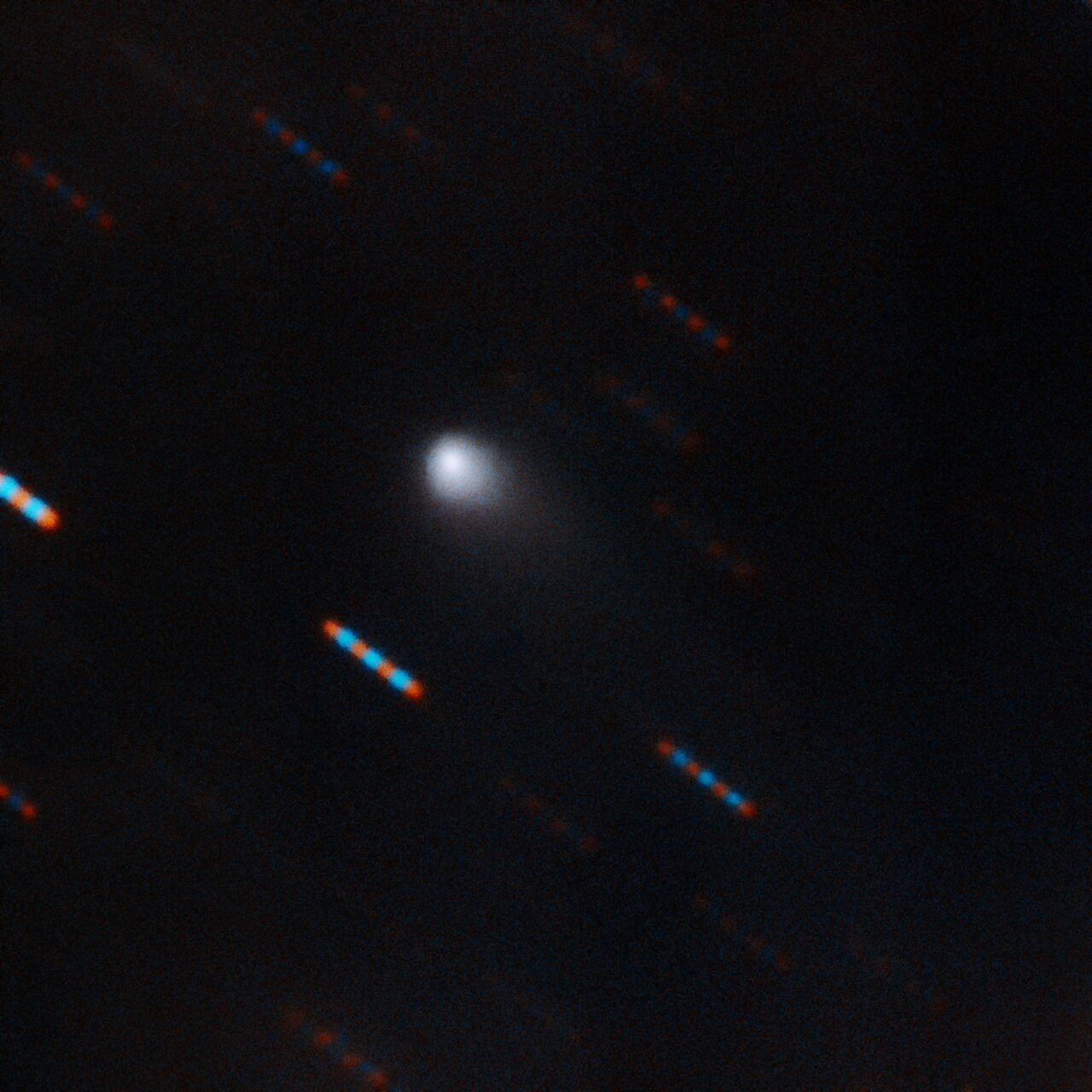Gemini Observatory Captures Multicolor Image of First-ever Interstellar Comet
September 13, 2019

The first-ever comet from beyond our Solar System has been successfully imaged by the Gemini Observatory in multiple colors. The image of the newly discovered object, denoted C/2019 Q4(Borisov), was obtained on the night of 9-10 September using the Gemini Multi-Object Spectrograph on the Gemini North Telescope on Hawaii’s Maunakea.
“This image was possible because of Gemini’s ability to rapidly adjust observations and observe objects like this, which have very short windows of visibility,” said Andrew Stephens of Gemini Observatory who coordinated the observations. “However, we really had to scramble for this one since we got the final details at 3:00 am and were observing it by 4:45!”
The image shows a very pronounced tail, indicative of outgassing, which is what defines a cometary object. This is the first time an interstellar visitor to our Solar System has clearly shown a tail due to outgassing. The only other interstellar visitor studied in our Solar System was ‘Oumuamua which was a very elongated asteroid-like object with no obvious outgassing.
More Information
NSF NOIRLab (National Optical-Infrared Astronomy Research Laboratory), the US center for ground-based optical-infrared astronomy, operates the international Gemini Observatory (a facility of NSF, NRC–Canada, ANID–Chile, MCTIC–Brazil, MINCyT–Argentina, and KASI–Republic of Korea), Kitt Peak National Observatory (KPNO), Cerro Tololo Inter-American Observatory (CTIO), the Community Science and Data Center (CSDC), and Vera C. Rubin Observatory (in cooperation with DOE’s SLAC National Accelerator Laboratory). It is managed by the Association of Universities for Research in Astronomy (AURA) under a cooperative agreement with NSF and is headquartered in Tucson, Arizona. The astronomical community is honored to have the opportunity to conduct astronomical research on Iolkam Du’ag (Kitt Peak) in Arizona, on Maunakea in Hawaiʻi, and on Cerro Tololo and Cerro Pachón in Chile. We recognize and acknowledge the very significant cultural role and reverence that these sites have to the Tohono O'odham Nation, to the Native Hawaiian community, and to the local communities in Chile, respectively.
